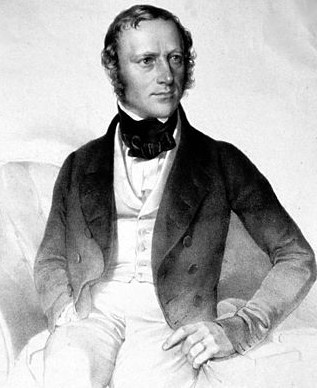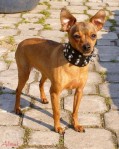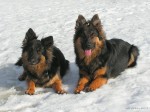Before we get to the history of Czechoslovakia, we’ll first need to know how how it even got on the map. It would seem at first as a little random arrangement. After all Czech lands didn’t have historically much to do with Slovakia, if we don’t count brief time of Great Moravia. But that could be hardly counted as state of Czechs and Slovaks…

For better understanding I recommend reading first about Czech National Revival and Political development until WW1.
Different nations – different history
We both lived through most of our existence in two different states. Slovaks in Hungarian kingdom and Czechs in their own kingdom as part of Holy Roman Empire.

The unification occurred under Habsburg rule. When nationalism started to spread through Europe, nations in Austrian Empire began to ask for their rights. And this was exactly the time when Czechs and Slovaks – under the idea of Pan-Slavism – slowly started to cooperate…and disagree.
How dare you have your own language!
the first part of the 19th century
The cooperation between Czechs and Slovaks started at the beginning of the 19th century. Our revivalist organizations began to work together – first culturally and then politically. At this time nation was defined as a group of people linked by language. Logically Slovaks soon defined their own written language (same as Czechs modernised theirs). The founder of the literary Slovak, as we know it today, was Ludovít Štúr.
Because until now Slovaks wrote differently than they spoke. Biblical Czech was besides Latin, German and Hungarian one of the languages used in Slovakia for hundreds of years. “Bernoláčtina” was the very first Slovak language standard and followed Biblical Czech (this is the major reason, why are our languages so alike, besides obviously being both Slavic).
To the point: when Slovaks came up with their own language, called at the time Štúr’s Slovak, Czechs got angry and accused them of subverting their cooperation. In their opinion it was ill-advised to destroy something that brought them together in the first place. Even after “making up” this language controversy was for decades strain on Czecho-Slovak relations.


Ľudovít Štúr and František Palacký
Thank you but no…
The very first attempt to create something like Czechoslovakia was made by František Palacký, who presented the idea in 1848 on the Slavonic congress. According to his idea of austroslavism, Czechs and Slovaks should together strive for autonomy within Austrian Empire, with the same rights as those for German citizens. Slovaks refused, as they wanted to have their own independence, not to mention their requirements were much more radical than those of Palacký
When Austria changed to Austria – Hungary
the second half of the 19th century
After changing Austrian Empire into dual monarchy, cooperation became difficult. Dividing the Empire gave Hungarians bigger power in their part of the Monarchy. They too fought against germanization, but little differently than Czechs – by magyarization. Centralist germanization wasn’t really comparable with magyarization. Magyarization was from the very beginning intentionally leading to assimilation of non-Hungarian nations. From 1868 everybody was Hungarian by law.

Here you can clearly see how was Austria divided. If you have no idea in which part is Slovakia, look again here.
Before Slovaks didn’t mind living in Hungarian kingdom, they just wanted to be treated equally. But now they weren’t even sure if they will be able to survive as nation. Just few examples: Slovaks couldn’t use their mother language in schools and local authorities. Mostly they were allowed to have only one (or none) politician in parliament. Any slightly nation-unifying organization was soon banned or not even allowed in the first place. Czechs on the other hand, while facing germanisation, at this point didn’t have to worry about their existence. At many places they economically and culturally rivalled Czech Germans (edit: not concurred, sorry for bad translation).
Czechs one time even tried to compromise with Hungarians, by agreeing to stop getting politically involved with Slovaks and in return Hungarians would side with them against Germans. But to be honest neither of them really followed this.
Not Czechs and Slovaks but Czechoslovaks!
At the end of the 19th century Czechs and Slovaks cooperated at least culturally (Slovaks donated money on Czech Natinal theatre, Czechs offered places for Slovak studens etc.) and through Czech journalists Europe often heard about scandalizing treatment of Slovaks in Hungary.


Czechoslovak Legions – army that fought alongside Allies and later for independence of Czechs and Slovaks. Without them would Czechoslovakia hardly exist.
Finally, T. G. Masaryk came up with political conception of Czechoslovakism, based on the idea that there exists only one Czechoslovak nation. What was at the beginning of the century sentimental Slavic movement, became political program, later accepted by all Czech political parties.
Masaryk thought ahead. He knew that if Czechs ever want to create independent state, they’ll have to deal with huge German minority. By connecting with Slovaks, “Czechoslovaks” would always have major power in the state. This solution began to slowly appear viable to Slovaks – Hungary was still very successful in destroying Slovak national identity and future didn’t look good for Slovaks. Some of them even thought about joining Russian Empire.
Presenting Czechs and Slovaks as one nation was also more easily explainable to the Allies (though it of course wasn’t really true). When convincing Allies, Masaryk used an argument that Czechoslovakia would become future ally against German expansion (and later re-establishment of Austria-Hungary).
Still, existence of the state wasn’t certain until the very end of the First World War. Only thanks to many activities abroad, Czechoslovak Legions and final persuading Allies that Austria-Hungary must be broken, Czechoslovakia could finally come to be.

American Czechs and Slovaks signing Pittsburgh Agreement, acknowledging the wish of both nations to create together independent Czechoslovakia. This document will be important in later chapters…
Continuation: Why was Czechoslovakia dissolved?
Read about Czechoslovak history chronologically here or go back to earlier Czech history.

















 Some people can read from Orloj which month it is, but I’m not one of them.
Some people can read from Orloj which month it is, but I’m not one of them.




































